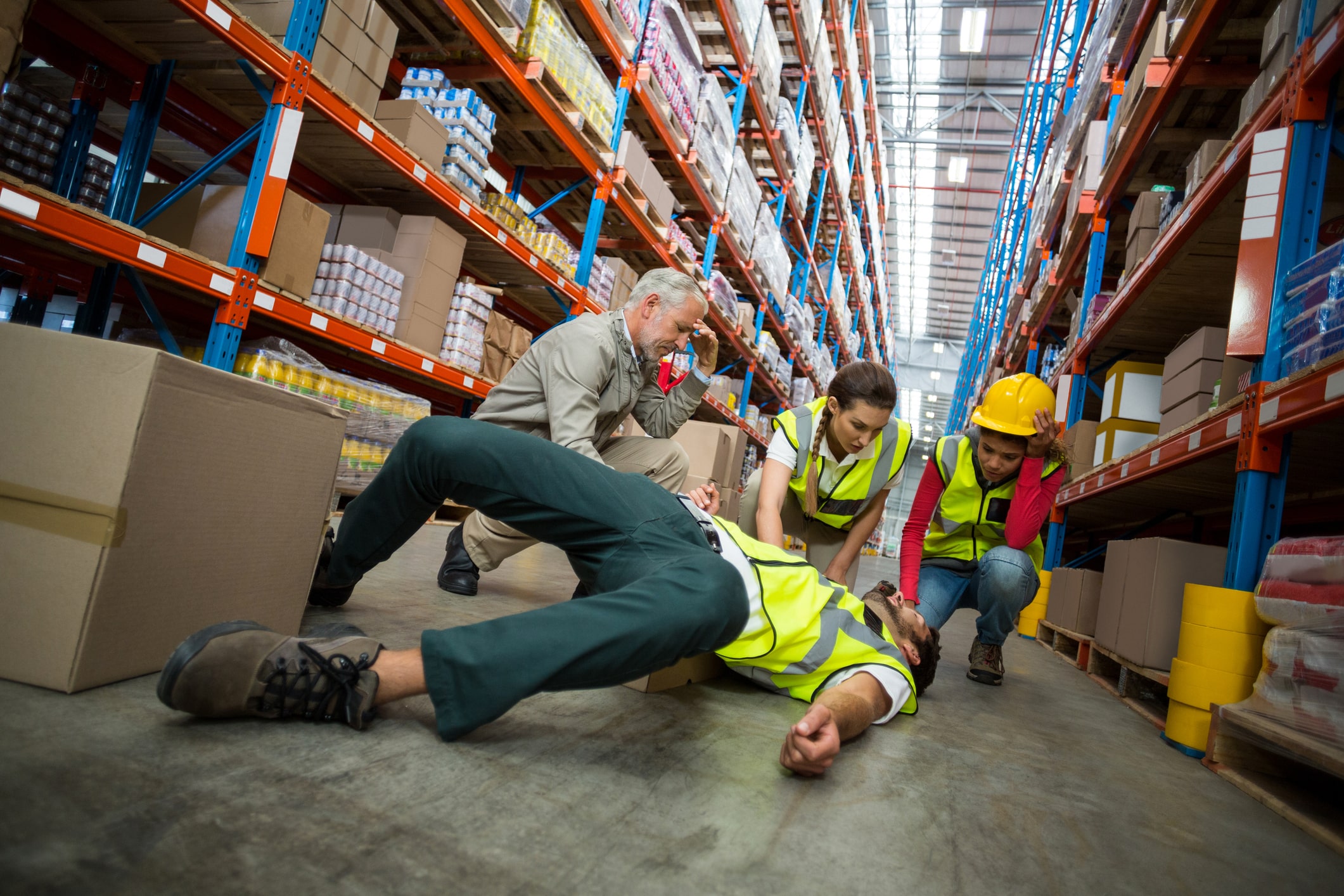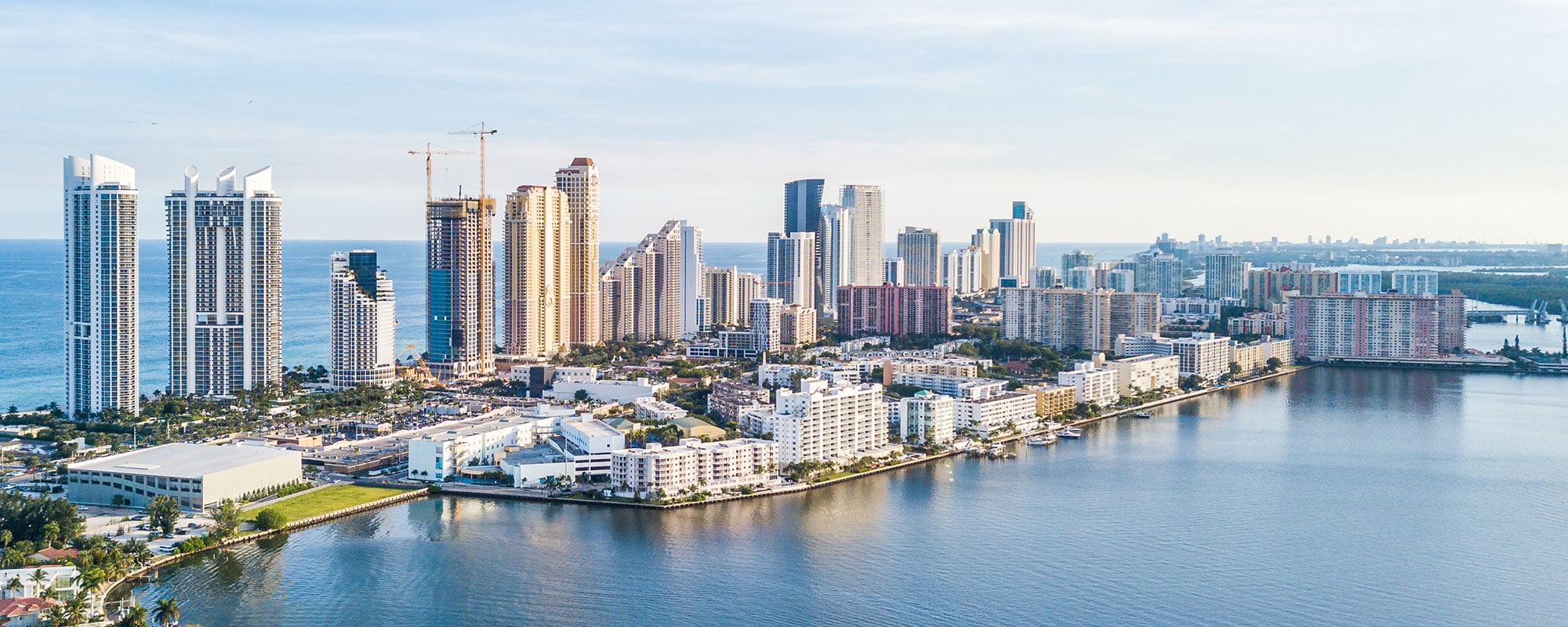The Difference Between Slip & Fall and Trip & Fall Accidents
Gregg Hollander | February 13, 2021 | Slip and Fall

Slip and fall accidents differ from trip and fall accidents in the types of injuries they cause. But the things you need to win a case and the damages you can recover will be the same, no matter whether your accident was caused by a slip or a trip.
Here are some important things you need to know about the differences between a trip and a slip and how to recover compensation for any type of falling injury.
An Overview of Slip and Fall Accidents
The phrase “slip and fall accidents” is often used as a catchall term to describe any accident that happens on someone else’s property. However, slip and falls are legally defined as a specific type of accident.
The Mechanics of a Slip and Fall Accident
A slip and fall happens when the friction between your foot and the floor is at such a low level that you lose your footing. If you viewed a slip in slow motion, you would first see your foot begin to slide. This would then throw off your center of gravity, causing it to become out of line with your feet, and ultimately making you lose your balance.
As your feet slip forward, you throw your hands back to try to catch yourself. You fall to the ground, usually backward or to the side. In many cases, your hands and arms also strike the ground as you try to brace against the collision.
How Slip and Fall Accidents Happen
Slip and fall accidents almost always occur because some substance has made the floor or ground extra slippery. Some examples of slip and fall hazards include:
- Water or snow
- Ice
- A waxed floor
- Spilled liquids
- Spherical objects, like marbles or candy
- Fruits or other moist foods
These hazards appear in retail stores, apartment buildings, offices, hotels, event venues, movie theaters, and other public places. When they result in a fall, the person or business responsible for the property might be liable for the damages caused.
Common Injuries From Slip and Fall Accidents
Slip and fall accidents can cause many types of injuries. But some injuries are distinctive to slip and falls, including:
Back Injuries
Since slip and fall accidents usually result in a backward fall, your back could easily strike the ground or an obstacle behind you. This can in turn cause broken vertebrae, slipped or ruptured discs, or strained back muscles.
Spinal Cord Injuries
If a disc or vertebra slips out of place or a disc bulges into the spinal column, the spinal cord could become compressed, leading to nerve pain, loss of sensation, or even paralysis.
Head Injuries
As you fall backward, your head might strike the ground. This can lead to bruises, bleeding, or even a skull fracture.
Brain Injuries
A concussion or contusion to the brain can occur when your head hits the ground. Severe brain injuries can lead to death. Less severe brain injuries can affect the sensory, motor, and speech centers of the brain or lead to behavioral changes.
Shoulder and Arm Injuries
An impact on the ground when trying to catch yourself may result in a broken or sprained wrist, arm, elbow, or shoulder.
Hip Injuries
Since people tend to fall onto their buttocks or side during a slip and fall accident, it’s easy to break a hip or strain hip muscles.
Other kinds of injuries can also occur. For example, if you slip on the stairs, you could suffer from broken ribs or neck injuries as you fall down the stairs.
An Overview of Trip and Fall Accidents
Most of the time, trip and fall accidents are not very different from slip and fall accidents. Both types of accidents are often generalized under the category of premises liability accidents. On occasion, the difference between a trip and a slip might be relevant in explaining how you received your injuries and how the person or business responsible for the property contributed to the circumstances that caused your injury.
Mechanics of a Trip and Fall Accident
A trip and fall occurs when an object catches your foot or leg and causes the center of your gravity to shift forward. As you fall forward, you reach out with your hands to catch yourself. Since your foot is caught, you might be unable to regain your balance before you fall forward to the ground.
How Trip and Fall Accidents Happen
Trip and falls usually happen due to something above the surface of the floor. This distinguishes them from slip and falls. Some examples of hazards that can cause trip and fall accidents include:
- Broken or cracked floors or concrete
- Uneven pavers or concrete slabs
- Warped wood flooring
- Raised thresholds
- Rippled carpet
- Changes in floor elevation, including steps up or down
- Objects on the floor
Tripping hazards are often made worse by poor lighting or a failure to warn guests about a hazard. This is why you will often see signs warning customers of a “step up” using bright tape or markings where a raised door threshold is present.
Common Injuries From Trip-and-Fall Accidents
Like slip and fall accidents, trip and falls produce some distinctive injuries. Some examples of these injuries include:
Finger, Wrist, Elbow, and Arm Injuries
As you fall forward, you might try to catch yourself. The impact on the ground can fracture your bones and dislocate joints in your arms.
Facial Injuries
If you are unable to catch yourself, your face could strike the ground, breaking facial bones, bruising the face, or knocking out teeth.
Head and Brain Injuries
A hard fall can lead to a concussion or contusion of the brain. Similarly, a skull or facial bone fracture may push bone fragments into the brain, leading to bleeding and permanent brain injury.
Neck Injuries
An impact can cause the head to snap forward, straining the muscles of the neck. The discs in the neck could also compress or rupture, damaging or impinging on the spinal cord.
Knee and Leg Injuries
A forward fall can cause the knees to connect with the ground. This can tear ligaments, cartilage, tendons, and muscles in the knees and legs.
Again, other injuries could result if the trip occurs near objects or stairs. For example, a trip and fall accident near a railing might lead to strained muscles or broken bones where the body impacts the hard rail.
Recovering Compensation for Falling Injuries
Whether you slipped or tripped, you must prove negligence occurred in order to recover compensation for your injury. Negligence has four elements:
Duty
Property owners or lessees must provide reasonably safe conditions for guests on their property.
Breach
Property owners fail to uphold their duty if they do not take reasonable measures to identify hazards and repair them or warn guests about them.
Damages
You must suffer damages.
Causation
The breach must be the factual and proximate cause of the damages.
These elements will have to be proven by a lawyer. They may examine security videos, interview witnesses, and obtain expert opinions about the cause of your injuries. This evidence will help your lawyer to persuade an insurance company or a jury that the property owner or lessee is liable for your injuries.
Contact Our Personal Injury Law Firm in South Florida
If you’ve been injured in an accident, please contact our experienced personal injury lawyers in Florida at Hollander Law Firm Accident Injury Lawyers to schedule a free consultation today. We have three convenient locations in Boca Raton, Fort Lauderdale, and West Palm Beach.
We proudly serve Palm Beach County, Broward County, and its surrounding areas:
Hollander Law Firm Accident Injury Lawyers – Boca Raton Law Office
7000 W Palmetto Park Rd #500
Boca Raton, FL 33433
(561) 347-7770
Hollander Law Firm Accident Injury Lawyers – Fort Lauderdale Law Office
200 S.E. 6th Street #203
Fort Lauderdale, FL 33301
(954) 287-0566
Hollander Law Firm Accident Injury Lawyers – West Palm Beach Law Office
319 Clematis St #203
West Palm Beach, FL 33401
(561) 556-7873
